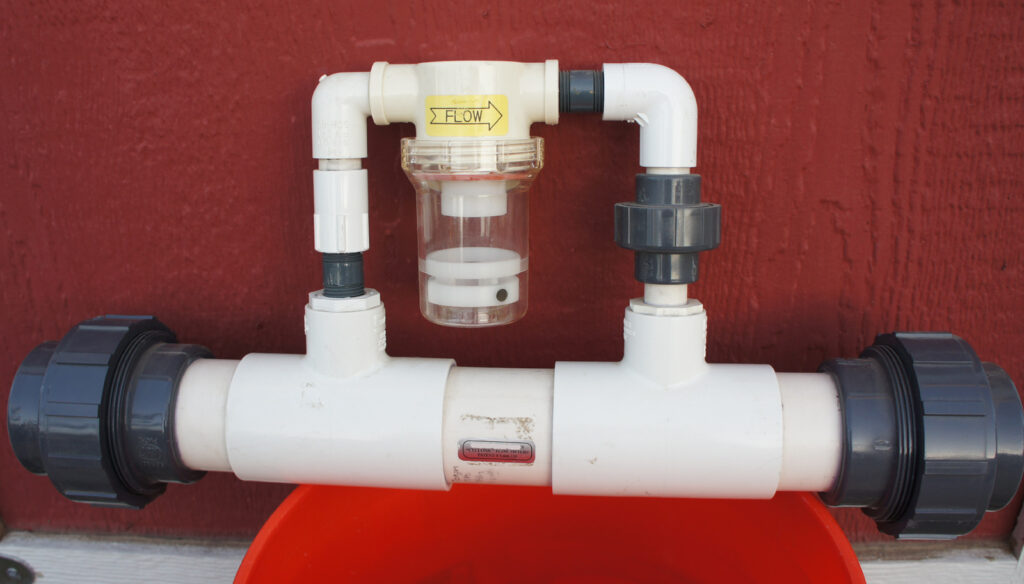A flow meter is a device used to gauge fluid flow rate through a fluid conveyance system. When a fluid, liquid, or gas travels through a constrained transmission system, it is measured for flow rate. There are numerous flow meters, including flow nozzles, orifice meters, venturi meters, and rotameters. These various flow meters operate on multiple concepts.
For instance, an orifice meter determines the fluid flow at the cross-sections of the entrance and exit of a minor, constrained aperture known as an orifice. In contrast, a rotameter-type flow meter monitors the volumetric flow rate inside several tubes installed throughout the transmission pipe.
Different fluid transfer systems use other instruments to monitor and regulate process variables. Two critical components in these systems are flow meters and flow transmitters. It’s common to think of these two devices as being interchangeable. These gadgets and their purposes are entirely different in reality. The following section will cover flow meters and transmitters separately for your benefit.
Process of Calibration for Flow Transmitters Depending on the Transmitter Type
The three primary flow transmitters are differential pressure transmitters, magnetic flow transmitters, and vortex flow transmitters. These three kinds only need an uncomplicated calibration with a master meter.
The master meter is a calibrated standard transmitter that operates according to all requirements. This gadget serves as a benchmark for the calibration of an active transmitter. A national or international standard must be utilized to calibrate the master meter used for this purpose. Additionally, it needs to work with the fluid being tested.
How does a flow transmitter operate, and what does it do?
A flow transmitter is a flow meter that has been improved. It is an integrated electronic circuit-powered flow meter. After receiving instructions from the operator, the electronic circuitry of a flow transmitter measures the flow. Flow transmitters can monitor and control fluid flow since they feature electronic circuitry. A flow meter is employed to gauge the rate at which a fluid moves through a pipe.
There are numerous flow meters, including the Rotameter, Venturi, Orifice, Ultrasonic, and Turbine meters. The transmission of flow rates is a critical necessity in a chemical plant. Information may be necessary for the supervisory control to collect and monitor data or for regulating flow (or another parameter). The use of Flow Transmitters helps to accomplish this goal. The value of the flow rate can only be seen on a flow meter by itself.
Read More: What is the role of technology in the online gaming industry?
Water Flow Meter Types
1. Mechanical flow meters
The automatic water flow meter, which measures flow through turbine rotation utilizing a propeller, shunt, or paddle wheel design, is the most widely used and cost-effective type of water flow meter. These mechanical water flow meters determine the rate at which water moves through the pipe, which rotates a turbine or piston.
The volumetric water flow rate and rotating speed of the blades have a linear connection. Mechanical water flow meters have the drawback of potentially clogging when the water is polluted or contains bigger particles, which raises maintenance expenses. Low water flow makes it difficult for mechanical water meters to function correctly.
2. Ultrasonic flow meters
Ultrasonic flow meters use ultrasound to assess the fluid’s velocity as it travels through a conduit to calculate the volumetric flow. An ultrasonic signal is initially transmitted downstream in the direction of the flowing fluid in a transit-time ultrasonic liquid flow meter. The fluid upstream is then sent an ultrasonic passcode.
The meter then uses this fluid velocity to calculate the volumetric flow rate in the pipe. The fluid’s flow velocity is then determined using this differential time.
3. Magnetic flow meter
Magnetic flow meters employ a magnetic field to gauge a fluid’s flow rate in a pipe to calculate volumetric flow. They apply Faraday’s Law of Electromagnetic Induction. Faraday’s Law states that voltage is produced as liquid moves through a magnetic field. Voltage is made more quickly when the fluid is flowing faster.
Electronics convert the voltage signal into the volumetric flow rate according to the volume of water flowing through the system. Since magnetic flow meters are only moderately accurate and cannot measure ions in pure water, they are inappropriate for custody transfer applications.
Differences between flow transmitters and flow meters
The following are some critical distinctions between flow meters and flow transmitters. Measurement of flow rates is the purpose of flow meters. On the other hand, the flow transmitter monitors and manages the flow. In addition to orifice plates and venturi meters, flow meters use various mechanical systems. Flow meters are designed for manual operation in the field compared to flow transmitters controlled remotely.
In contrast, flow transmitters have a robot body and a functional electrical circuit. You may now select the appropriate flow transmitter or flow meter because you are aware of their differences. Of course, if your application calls for them, flow transmitters aid in measuring, monitoring, and controlling flow. However, the product’s quality might significantly impact your application. Therefore you must purchase from a reputable source or manufacturer, like Apure Instruments.
Advancements in Flow Transmitter Technology
Flow transmitter technology has witnessed significant advancements, leading to enhanced accuracy and functionality in fluid flow measurement and control. With integrated electronic circuitry, modern flow transmitters offer precise monitoring and management of fluid flow rates in various industrial applications. These advanced transmitters enable real-time data transmission and remote control, optimizing operational efficiency and productivity.
Incorporating state-of-the-art sensors and signal processing techniques, contemporary flow transmitters deliver reliable performance even in challenging environments. Their versatility allows for seamless integration into diverse fluid transfer systems, facilitating seamless data collection and analysis for informed decision-making. As technology continues to evolve, the role of flow transmitters in industrial processes becomes increasingly pivotal, driving innovation and efficiency across sectors.

